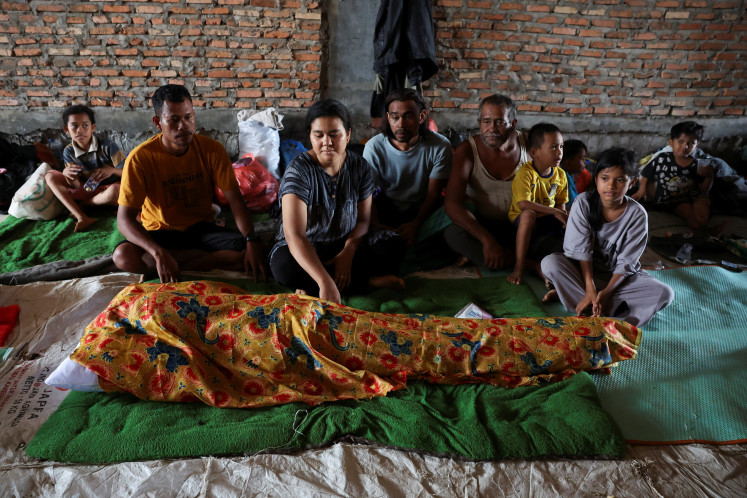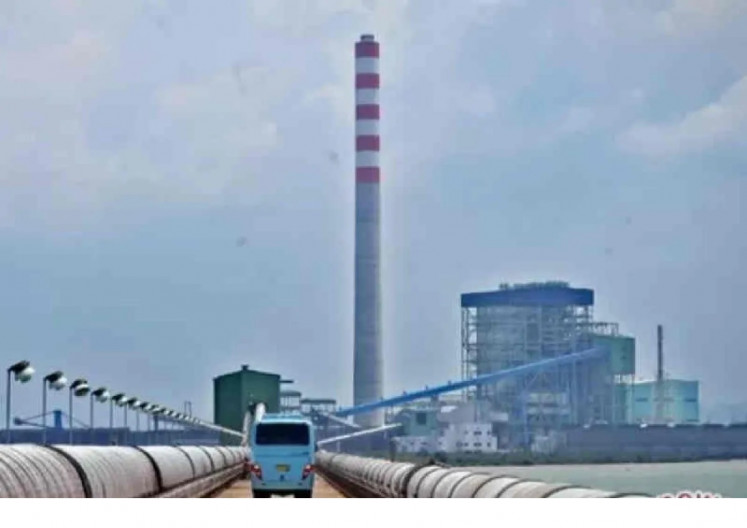Popular Reads
Top Results
Can't find what you're looking for?
View all search resultsPopular Reads
Top Results
Can't find what you're looking for?
View all search resultsGeothermal energy ' challenges and innovation
The driving force behind geothermal development is Article 33 of the Constitution on development of the energy sector
Change text size
Gift Premium Articles
to Anyone
T
he driving force behind geothermal development is Article 33 of the Constitution on development of the energy sector. From independence up to the decentralization in 1998/1999, this was done through state-owned enterprise Pertamina.
All geothermal development in that period was through joint venture agreements with Pertamina who managed geothermal resources on behalf of government. The current geothermal capacity is 1.2 gigawatts with the majority of the plant using steam supplied by Pertamina.
After deregulation, geothermal resources were carved up between the national and local governments. Which local government entity would have control was defined by the location of the resources. These could be one or two districts or the provincial government.
The geothermal law of 2003 provides the key to allocation of control with the right to develop geothermal resources resting now with local governments. Local people can now protect geothermal resources, in a similar way to forestry practices. This has certainly given local governments plenty of opportunities, but with them have come big challenges.
In such systemic change, opportunities are not always immediately recognized. Often, these changes are first seen as obstacles. In this case, due to local opposition, geothermal fields are often not developed, but when development goes hand-in-hand with the local population, both the government and local people are better off.
In the long run, geothermal electricity can provide a stable electricity supply at a lower price than average. Forests surrounding the fields can be preserved due to the irrigation water brought by geothermal powers and jobs can be brought to local people operating and managing the steam-fields.
This what we find in Lahendong, Sulawesi and Mount Salak, just north of Bandung, to mention but two.
It really is a big challenge. Local governments can only provide licenses for 5 years, or a maximum of 10 years if they are reelected for second terms. Due to the enormous upfront investment, geothermal projects need to operate, undisturbed and without petty politicians meddling in their terms and conditions or financial arrangements, for a period of at least 25 years. This mismatch between the duration of licenses and the financial life of geothermal assets remains a fundamental obstacle for large-scale geothermal development.
A number of efforts to address this challenge have been made, some very successful. The Indonesia Infrastructure Guarantee Facility provides guarantees for local and foreign investors against political changes, just like the Multilateral Investment Guarantee Agency of the World Bank does for international investors. While the institution has been created, we need to improve it and learn the lessons that come equally from successful and unsuccessful applications.
Under the geothermal law, the national government is responsible for defining geothermal working areas and the local governments manage the exploration. This has also created a number of problems for local governments that should gradually be addressed. Building on the work of the national government, based on limited sub-surface surveys, the local government has a duty to guarantee the presence of the resource (i.e. the resources is confirmed and can be exploited for a well defined capacity).
Not only that, the local government has to attract qualified investors, prepared to work closely with the local people. The national government has the resources to invest and develop, but local governments are often handicapped by a lack of resources.
The first step to address these challenges has been the creation a financial instrument, managed by the Government Investment Agency (PIP), which local governments can use to finance exploration. However, this has proven difficult in practice. Technical expertise is needed to determine what exact risks are associated with a single exploration and how the instrument can properly mitigate such risks.
Another innovative approach is to use the Clean Technology Fund (CTF), a climate change facility managed by international development banks, now considering extending their portfolio to finance geothermal exploration. The question that needs to be addressed is not what happens if drilling is successful, rather what happens when the drilling is unsuccessful ' dry hole ' and how will the fund be reimbursed.
The national government utilized CTF funds for the development of Ulebelu in Lampung and Lahendong, co-financing with a sovereign soft-loan from the World Bank. How can this work for local governments? How can dry hole risks be mitigated when the fields are owned by local governments? There is no system to on-lend the funds to local governments or developers for exploration.
The easiest way to address this risk is the pledge of shares of the joint venture company that is formed between the local government and private sector developers. Aceh has chosen to do this in developing Seulawah. In turn, a private developer can address this issue by operating an existing fossil fuel utility, and provide a guarantee for the repayment of the debt used for exploration.
What is important to consider is not so much the cost of the risk, but how these risks can be mitigated in the most effective way. The fund needs an opportunity to recover the debt as risk capital through innovative approaches, like providing a guarantee of repayment through the operation of a power plant using
different fuel.
We should explore regulations that facilitate this option. The fundamental of the innovation is providing developers not only the right to exploit geothermal resources, but granting that right with the obligation of providing electricity from other sources, in case the geothermal resource is commercially not attractive.
The writer is director for energy, mineral resources and mining at the National Development Planning Board (BAPPENAS). The views expressed are personal.










